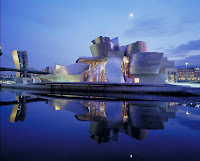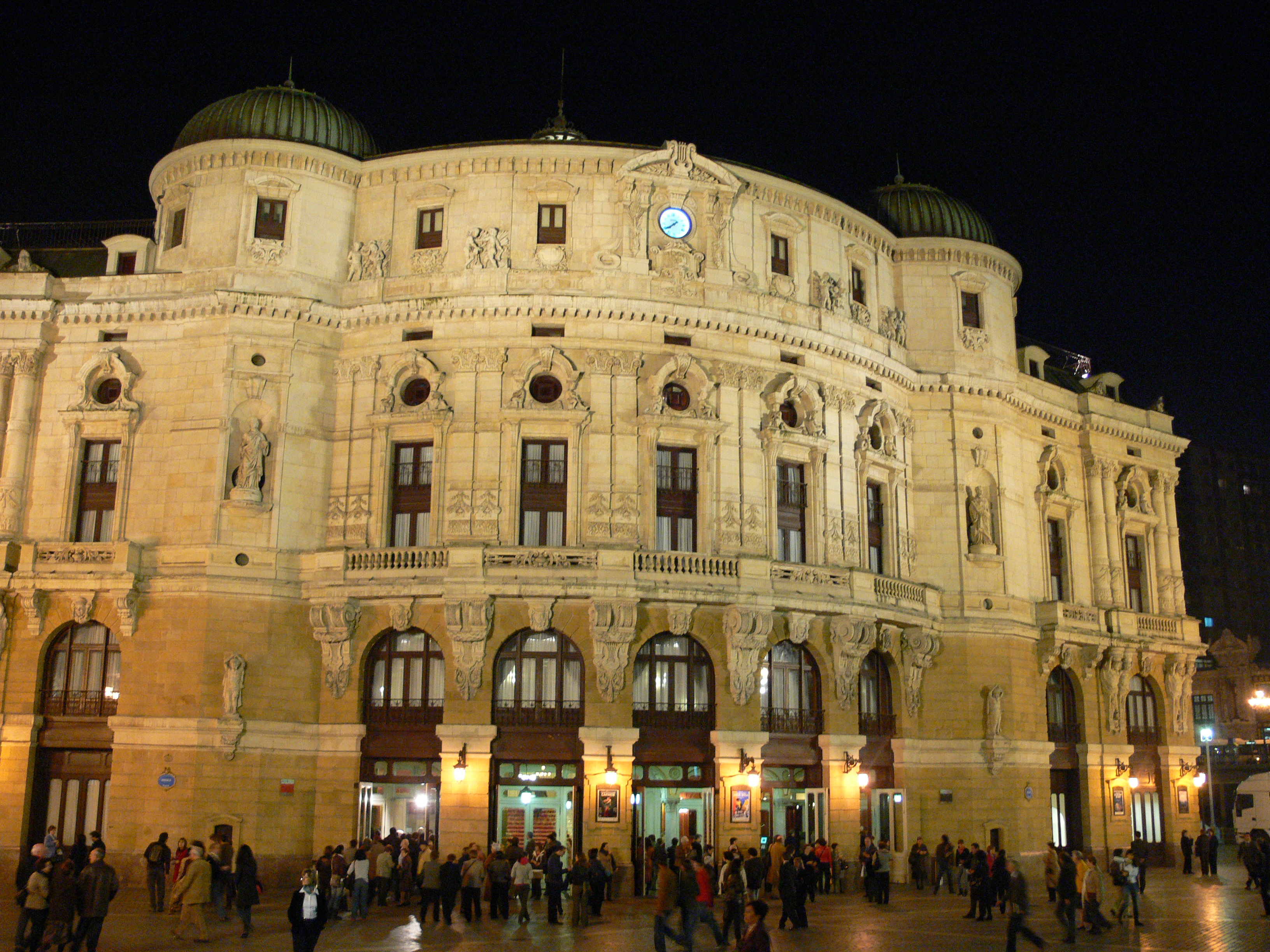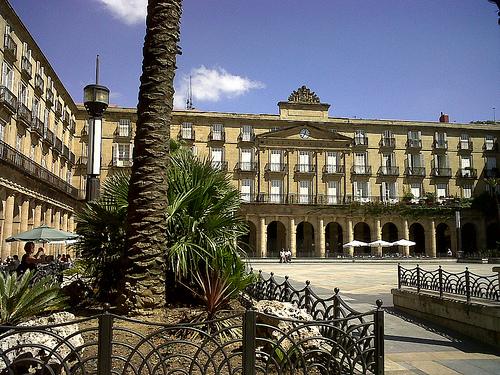Es posible que ya antes del 15 de junio de 1300, aquel pequeño enclave a orillas de la ría del Nervión conocido como Bilbao se diferenciase sustancialmente del resto de las poblaciones vizcaínas. Las labores de pesca, la extracción de hierro y la incipiente industria de transformación del mismo otorgaron a esa comunidad localizada en lo que hoy se conoce como Bilbao La Vieja la virtud de la diferencia en base a una actividad económica dinámica y muy alejada de la de su entorno más inmediato. Con todo ello, la fundación de la villa en junio de 1300, por parte de Don Diego López de Haro, y la posterior refundación, diez años después, a cargo de su sobrina, María Díaz de Haro -que extendió los privilegios a toda la actividad comercial-, no hizo más que confirmar la singularidad de una población que había asumido desde muy temprano una vocación mercantil sin comparación alguna con otros lugares que también habían alcanzado el rango de villas.
El estatus jurídico que le otorgó la Carta Puebla, su control por ley sobre el tráfico marítimo del Nervión y su casi perfecta ubicación geográfica por tratarse de un puerto interior confirieron a Bilbao los elementos precisos para desarrollar un concepto del trabajo y de la actividad económica que nada tenía que ver ni con el de las otras villas del Señorío ni, mucho menos, con la monótona y casi estática actividad del resto de las anteiglesias de su entorno.
Fuero de Logroño
¿Cómo era el Bilbao que se encontró Don Diego López de Haro? No hay muchos datos al respecto. A finales del siglo XIV, la población no contaría con más de 1.500 habitantes que, mayormente, se concentraban en un núcleo urbano compacto formado por las calles Somera, Artecalle y Tendería. A esto se sumaría el enclave del otro lado de la ría, Bilbao La Vieja. Ambas orillas quedaban unidas por un puente junto al que se levantaba un bastión defensivo, alcázar, que ocupaba el mismo lugar en el que hoy en día se levanta la iglesia de San Antón.
Este núcleo inicial se vio completado, gracias a los privilegios otorgados a través del Fuero de Logroño, por un amplio territorio sometido a la jurisdicción de la nueva villa. Éste abarcaba desde el puntal de Zorroza, en la desembocadura del Cadagua, ascendía por el Pagasarri, bajaba por Etxebarri, justo en el punto de unión entre el Ibaizabal y el Nervión, y se internaba en dirección a Begoña incluyendo Deusto hasta alcanzar la desembocadura del río Asúa. No estaba mal para empezar ya que, en cierto modo, la generosidad tanto de Don Diego como de Doña María sentó las bases de la posterior expansión de la villa. Otra razón, qué duda cabe, para que el resto de las anteiglesias, la Tierra Llana, mirasen con desconfianza y bastante hostilidad a los bilbaínos.
Sin embargo, a pesar de los privilegios, Bilbao se convirtió en villa en tiempos revueltos. Las andanzas de los señores de la guerra en plena lucha de bandos no libraron a los bilbaínos de más de un susto. De hecho, se tuvieron que echar a las armas para proteger a la población de los desmanes de algún que otro noble desalmado. Así ocurrió en 1320, cuando los vecinos de Bilbao impidieron la entrada y derrotaron a Martín Pérez de Leguizamón. Más tarde, en 1334, y con el propósito claro de defender las siempre interesantes actividades de la incipiente clase burguesa de Bilbao, el rey Alfonso XI confirmó en Bermeo la Carta Puebla de López de Haro y dio permiso para que se construyera una muralla defensiva. No obstante, una vez pasada la tormenta de los banderizos, surgió otra mucho más preocupante y que amenazó con extenderse en el tiempo.
A este respecto, Teófilo Guiard Larrauri señala que «y así que fueron aplacándose las guerras y se decantaba el sentimiento comunal en los pueblos próximos, comenzó a manifestarse en estos la oposición contra la villa, hostilidad engendrada por la consideración de los excesivos privilegios de Bilbao, fomentada por la práctica de ellos y fortalecida ahora por otros factores, en que entraban con valor principal la riqueza creciente de la villa y la estimación de soberbia y absorbente con que se le reputaba».
Todo ello supuso que durante buena parte del siglo XV, Bilbao viviera bajo la constante amenaza de señores que, erigidos en portavoces y defensores de las anteiglesias, no dudaron en intentar asaltos, robos y distintas agresiones contra los intereses de la villa.
Las Siete Calles, el cogollito
Sin embargo, nada de eso frenó la actividad comercial. Poco a poco, Bilbao se transformó en el centro neurálgico del flujo mercantil de todo el Señorío. Por otro lado, y a pesar de las presiones del entorno y de la inseguridad manifiesta que tuvo que soportar, la ciudad creció de tal modo que, a mediados del siglo XV, se había formado ya lo que Indalecio Prieto llamó «el cogollo de la villa», es decir, las Siete Calles. Así, a las tres primeras se le añadieron Belosticalle, Carnicería Vieja, Barrencalle y Barrencalle Barrena. Una muralla cerraba y protegía aquel núcleo salvo la parte abierta a la ría, donde se ubicaron para la defensa las torres de Leguizamón, Güemes, Arbolancha, Marquina, Arbieto, Novia y Larrínaga.
Al mismo tiempo, la villa extendió sus influencias e intereses más allá de su jurisdicción y del propio Señorío. Elegida por Burgos para canalizar el tráfico de la lana castellana, lo que le permitía ventajosos contactos con Medina del Campo, Bilbao estableció rutas comerciales con puertos del norte de Europa como Brujas, Nantes o Londres. Increíblemente, a pesar de la hostilidad manifiesta de su entorno, de las frecuentes agresiones y de haber tenido que aguantar los bárbaros desmanes de los banderizos, Bilbao demostró una gran vitalidad. Nada tenía que ver su vigor, su vocación y su concepto del trabajo con las demás anteiglesias del Señorío. Quizá esa fuese la clave de su constante expansión. Y también la de la pertinaz y cada vez mayor hostilidad por parte de la Tierra Llana.

 ziren eta langile guztiek lanpostua galdu zuten. Langabezia %25era heldu zen Bizkaian.
ziren eta langile guztiek lanpostua galdu zuten. Langabezia %25era heldu zen Bizkaian.





















